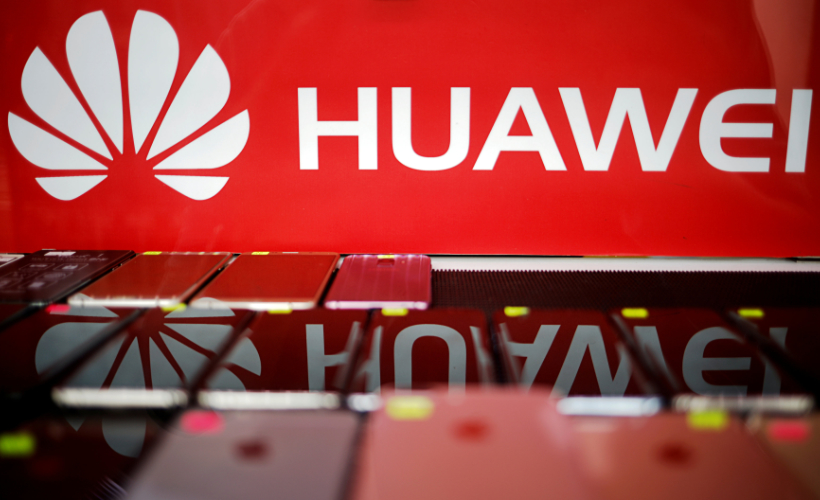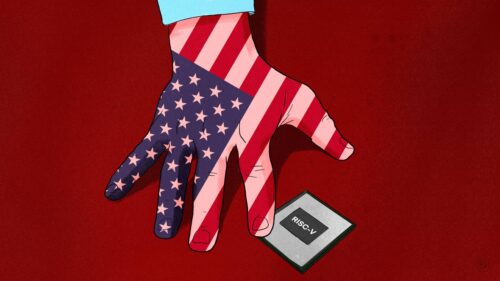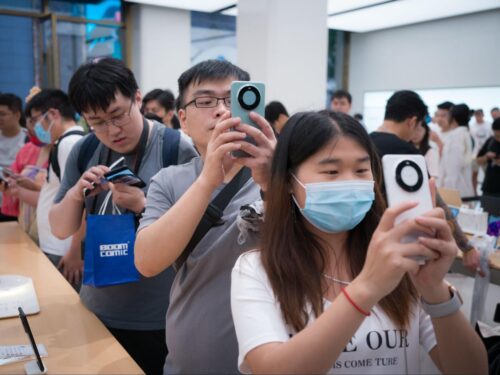U.S.-China supply chains and innovation: The risks the Huawei hawks don’t understand

The ongoing drama with China’s largest and most innovative technology company, Huawei, illustrates how the narrative on innovation in China and the United States has changed, bringing along with it ill-conceived goals and priorities on both sides. Lately, the narrative coming from just a portion of the so-called “Washington consensus” on China — basically, that China has cheated and subsidized its way to a technological position that rivals and aims to “dominate” the U.S. — accepts myths about China and innovation, while largely ignoring the role that 30 years of access to China has played for the most innovative companies in the U.S.
The somewhat stunning accusation earlier this month by some pundits — namely, that Google’s concern over an Android fork brought about by the U.S. action could harm U.S. national security and was somehow prompted by pressure from Beijing — illustrates how this debate is characterized by “low information” responses to complicated problems. The Google concern was soon echoed in hushed tones by other leading U.S. technology companies, all highlighting the critical nature of China’s talent pool, market, and innovative private sector to their current and future business models. However, they all had to tiptoe around the China hawks in D.C. to make their case, fearful of appearing to push too hard against the current narrative, to make a case that policymakers in D.C. understood viscerally in previous administrations. This sensitivity is testament to how far the U.S.-China Tech Cold War has come, spilling over into the broader narrative on China.
Ironically, the Huawei case has both crystallized U.S. concerns about supply chains originating in China for critical technologies — even though the U.S. has no appreciable Chinese telecom equipment in its own networks — and highlighted the dependence of Huawei on critical and irreplaceable U.S. technology supplies, and U.S. companies on Huawei and the China market to drive research and development (R&D) and innovation in the age of 5G and artificial intelligence. This latter fact appears, shockingly, to be irrelevant to those so obsessed with Huawei that they are willing to blow up global mobile supply chains to ensure that the U.S. military can operate globally on “secure and controllable” networks free of China-origin gear.
Some U.S. suppliers make 30 percent of their revenues from Huawei
The global ramifications of the seemingly innocuous Commerce Department press release issued unceremoniously on May 15 are now glaringly apparent. Someone within the mobile industry trade group GSMA earlier this month leaked details of an internal scenario-planning document that estimated the potential cost just for Europe of the Huawei action at $62 billion — though over what period and on what basis was not clear — pushing out 5G deployment by nearly 2 years. Both numbers are probably conservative estimates. We do not yet have the means to calculate the potential costs here. This is because without access to U.S. technology, no carrier around the world can count on Huawei gear for 5G upgrades, and this will also likely mean that carriers will have to tear out and replace their Huawei 4G gear, most not yet fully amortized, at great cost and time, including training engineers on new equipment. Since this has never been done at such a scale, across so many carriers, and with such advanced technologies, no one knows the costs.
The mobile industry trade group GSMA reportedly estimated the potential cost just for Europe of the Huawei action at $62 billion — though over what period and on what basis was not clear — pushing out 5G deployment by nearly 2 years. Both numbers are probably conservative estimates.
That is the infrastructure side of Huawei’s business. The consumer side also stands to suffer hugely — Huawei shipped nearly 200 million smartphones globally last year, and was set to lead on 5G handset deployments. Thus 45 percent of the firm’s revenue is at risk, and its smartphone sales have fallen off a cliff. All of those phones and each piece of Huawei infrastructure gear, from base station controllers to servers in data centers, are chock-full of U.S. semiconductors and software, along with myriad other components from its more than 1,000 U.S. suppliers. Revenue from Huawei for U.S. suppliers ranges from the low single digits to up to 20 percent or as much as 30 percent. This was set to rise sharply as the firm prepared to deploy huge numbers of infrastructure and smartphones globally at the launch of the 5G era. One Huawei supplier told me that the 20 percent of their revenue from China was essentially all plowed right back into R&D, for both the U.S. and China markets.
It is in part this loss that U.S. companies are pointing to as problematic for their future ability to conduct R&D at the level to which they have become accustomed. And indeed the loss is not just revenue. Chinese firms like Huawei are pushing the envelope on innovation across mobile infrastructure and smartphones. One large carrier I spoke with claimed that Huawei 5G gear was three to five years ahead of other competitors. Regardless of how accurate this is, the point is that Huawei is pushing innovation in one of the most advanced technology sectors globally, including new semiconductor designs, systems architectures, software, and artificial intelligence development, as well as across many associated industries such as autonomous driving and smart cities.
5G political slop
That none of this was taken into account by U.S. decision makers was the result of many factors. Foremost among them is that there is no U.S. government entity responsible for understanding global information and communications technology (ICT) supply and value chains, U.S. company R&D budgets, and innovation systems, let alone the importance of 5G and its associated technologies and their supply chains. The current laserlike focus on national security, stemming from the U.S. National Security Strategy and the U.S. “national security innovation base,” means that there is largely no audience that is willing to listen or equipped to fully understand arguments from industry about economies of scale, supply chains, and innovation.
Revenue from Huawei for U.S. suppliers ranges from the low single digits to up to 20 percent or as much as 30 percent. One Huawei supplier told me that the 20 percent of their revenue from China was essentially all plowed right back into R&D, for both the U.S. and China markets.
And 5G seems to be particularly difficult for Washington policy elites to come to grips with. Virtually untalked about within the growing “Washington consensus” for most of 2018, and even after my firm published “The Geopolitics of 5G” in November, it suddenly was everywhere as we turned the corner into 2019. But the concern over 5G in D.C. has not been generated from within industry circles, but from deep within the U.S. government, with D.C. think tanks piling on. As Anthony Rutkowski observed in May: “The initial, essential step toward understanding 5G is to perform an intellectual body purge of endless disgorging of cluelessness and disinformation that emerges from the Washington White House and radiates out around that city and then to the outside world that it infects. The institutes, pundits, self-professed experts, summits, and even the U.S. press all pretty much feed out of the same trough of 5G political slop that gets passed around as incantations of ignorance, spin, and K-street lobbying.” Ouch.
This is the result of complicated historical factors. First, the U.S. government lacks a high-level entity responsible for balancing national security concerns with the impact of particular policy choices on U.S. industry and its innovation capacity. Simply put, there is no body capable of doing sophisticated analysis of how an action like the Huawei Entity List decision will impact U.S. companies and global supply chains. The same is true for the U.S. think tank community. While pockets of excellence on narrow specific technology policy areas exist, there are none dedicated to the intersection of geopolitics and technology at a time when nuanced and in-depth analysis of policy is most needed. In addition, the Washington narrative holds that the 30-year entanglement of U.S. technology supply chains in China is now a major national security threat — to the U.S. military and U.S. critical infrastructure — and needs to be unwound, regardless of the costs. This has been fueled by such stories — still independently unconfirmed and strongly denied by all the alleged victims — as the Bloomberg piece last fall alleging that Chinese subcontractors had implanted rice-sized hardware backdoors on server motherboards destined for major U.S. cloud services providers. These two factors make it likely that the Digital Iron Curtain currently slowly but inexorably falling between the U.S. and China, across flows of goods and services, finance and investment, and personnel will continue its journey, with unknown consequences.
Eroding the ability of U.S. companies to innovate for a global market
Many argue that this will be good for China in the long run, forcing Chinese tech companies to go cold turkey on their addiction to Western technology. A hard look at Huawei’s supply chains suggests that local production could begin to replace Western suppliers sooner than many have anticipated. Also in vogue is the argument that U.S. companies can weather the revenue loss from China and continue to innovate. This type of reasoning is being done by camps with a limited view of how global value chains are developed and sustained. Huawei in fact did not intend, as some have suggested, to become entirely independent of Western technology. In today’s global technology ecosystems, this is not feasible for any technology company. But forced to, Huawei will attempt to become independent, both boosting China’s domestic capabilities across the board, and at the same time, eroding the ability of U.S. companies to innovate for a global market, and boosting the position of European and Asian suppliers not subject to the Entity List provisions. The Huawei action also creates a broader dynamic, where U.S. companies will now be increasingly considered as untrustworthy partners for other Chinese and foreign firms.
Huawei in fact did not intend, as some have suggested, to become entirely independent of Western technology. But forced to, Huawei will attempt to become independent, both boosting China’s domestic capabilities across the board, and at the same time, eroding the ability of U.S. companies to innovate for a global market, and boosting the position of European and Asian suppliers.
Huawei is deeply embedded in the global tech division of labor. It licenses from British firm ARM — owned by Japan’s Softbank — processor technology architectural frameworks and services, integrates advanced memory from U.S., Japanese, and Korean suppliers, and leverages manufacturing capabilities from Taiwan Semiconductor Manufacturing Corporation (TSMC) that incorporate critical Dutch technology, along with software from a dozen key U.S. suppliers. Its chip designs depend on electronic design automation software from U.S. and German companies. The U.S. portions of these innovation frameworks will be the primary casualties if the Entity List action remains in place.
Adding to the snowballing costs of the Huawei action are Beijing’s suite of countermeasures, which have not yet been fully deployed. None of them are of the same sheer throw weight as the U.S. Huawei action — taking down a $110 billion company with global operations that underpin critical infrastructure in over 100 countries around the world is a tall order to top. China controls a limited number of technology inputs, rare earths, and some critical assemblies and mechanical parts or capacitors that are best produced in China now with high precision and low cost. None are essentially irreplaceable, but trying to reproduce these parts of the global tech supply chain would come at a considerable cost.
What’s next?
Over the next weeks, we will see how China rolls out elements of its “unreliable entity list” in response to the U.S. action. It will not be pretty — already there are lots of rumors swirling around Beijing among U.S. companies. Powerful government bodies, including the National Development and Reform Commission, the Ministry of Finance, and the Ministry of Industry and Information Technology, called in about a dozen U.S. and foreign companies earlier this month to warn them generically about cutting off key technology supplies, offering vague warnings about the consequences. But urging U.S. companies to violate U.S. law is not a particularly wise move — they are also already lobbying in Washington, and do not want to be seen as carrying Beijing’s water on this.
Chances for finding an off-ramp remain slim. Huawei — with Beijing’s blessing — would have to come to Washington in a repentant mood, and agree to a humiliating agreement. It is not even clear that Washington would play ball here. The firm’s only hope is that both sides agree to save the company to get the stalled trade negotiations back on line. Plan B is clearly to forge ahead, ordering 10,000 developers to redesign Huawei’s 4G base stations and a key antenna without U.S. components, and rushing out the Hongmen forked Android operating system — the one Google is concerned about — by September.
Meanwhile, the U.S. has yet to articulate a clear message about the Huawei Entity List action: Messaging has been nonexistent. In addition, there has been no discussion from policy circles in Washington about how U.S. companies should prepare for competition in a world where Huawei will be selling smartphones with forked Android operating systems in Africa, Latin America, and elsewhere, at Google’s expense. Huawei will also be developing alternative semiconductor and software suppliers, while some of the most innovative firms in the U.S. must seek to grow with hugely diminished market and R&D opportunities. Then there are all the U.S. allies in Europe that will be struggling with the security of their 4G networks and the huge costs of the move to 5G, all the while facing delayed deployment while EU companies forego the innovation to come on top of those networks. This appears to amount to, at the least, strategic malpractice.
We are in uncharted waters, in a sinking ship of globalized ICT supply chains, with U.S. tech companies furiously bailing water, while China hawks in D.C. rub their hands with glee, eager to see Huawei go under. It will be an interesting summer…






